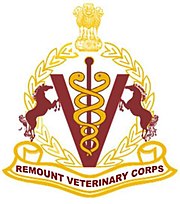
The Labrador Retriever or Labrador is a British breed of retriever gun dog. It was developed in the United Kingdom from fishing dogs imported from the independent colony of Newfoundland, and is named for the Labrador region of that colony. It is among the most commonly kept dogs in several countries, particularly in the Western world.

The Shetland Sheepdog, often known as the Sheltie, is a breed of herding dog that originated in the Shetland Islands of Scotland. The original name was Shetland Collie, but this caused controversy amongst Rough Collie breeders of the time, so the breed's name was formally changed. This diligent small dog is clever, vocal, excitable and willing to please. They are incredibly trustworthy to their owners to the point where they are often referred to as "shadows" due to their attachment to family. This breed was formally recognized by The Kennel Club (UK) in 1909.

The Arabian or Arab horse is a breed of horse that originated on the Arabian Peninsula. With a distinctive head shape and high tail carriage, the Arabian is one of the most easily recognizable horse breeds in the world. It is also one of the oldest breeds, with archaeological evidence of horses in the Middle East that resemble modern Arabians dating back 4,500 years. Throughout history, Arabian horses have spread around the world by both war and trade, used to improve other breeds by adding speed, refinement, endurance, and strong bone. Today, Arabian bloodlines are found in almost every modern breed of riding horse.

The Australian National Kennel Council (ANKC) is the coordinating kennel club of Australia. The ANKC is a member of the Fédération Cynologique Internationale.
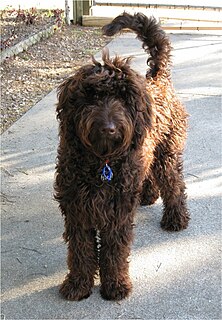
A Labradoodle is a crossbreed dog created by crossing the Labrador Retriever and the Standard, Miniature, or Toy poodle. The term first appeared in 1955, but was not initially popular. Labradoodles are considered a good choice for people with canine dander allergies, since some have the same hypoallergenic coat as their poodle ancestors.

The Lipizzan or Lipizzaner, is a horse breed named for the Lipizza Stud of the Habsburg monarchy. The breed is closely associated with the Spanish Riding School of Vienna, Austria, where the horses demonstrate the haute école or "high school" movements of classical dressage, including the highly controlled, stylized jumps and other movements known as the "airs above the ground." The horses at the Spanish Riding School are trained using traditional methods that date back hundreds of years, based on the principles of classical dressage.

The Mudhol Hound, also known variously as the Maratha Hound, the Pashmi Hound the Kathewar Dog and the Caravan Hound, is a breed of sighthound from India.
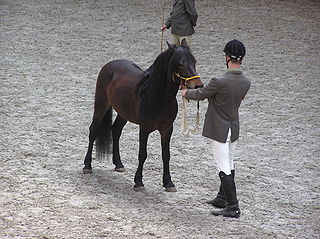
The Hucul or Carpathian is a pony or small horse breed originally from the Carpathian Mountains. It has a heavy build and possesses great endurance and hardiness. The breed is also referred to as the Carpathian pony, Huculska, Hutsul, Huțul, Huțan or Huzul. The breed gets its name from the Hutsul people, who live mostly in the Carpathians in Ukraine and in Romania, but also in an area in the East Carpathian Mountains north of the river Bistritz, officially named “Huzelei”.
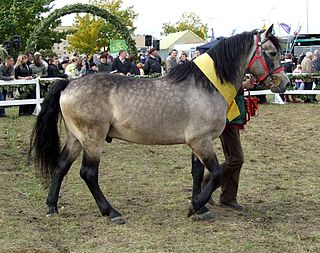
The Žemaitukas is a historic horse breed from Lithuania. It may be classified as a pony, due to its relatively short stature. Known from the 6–7th centuries, it was used as a war horse by the Lithuanians during the Northern Crusades and is hailed in Lithuania as part of the state's historic heritage. Its origin is uncertain; it is related to the Estonian Native and the Konik. The breed contributed to the foundation of the Trakehner. Once popular, the breed was brought to the brink of extinction by changing agricultural demands and World War II. As of 2010, the total population is estimated at 400 individuals.

The Royal Army Veterinary Corps (RAVC), known as the Army Veterinary Corps (AVC) until it gained the royal prefix on 27 November 1918, is an administrative and operational branch of the British Army responsible for the provision, training and care of animals. It is a small corps, forming part of the Army Medical Services.

The Zaniskari or Zanskari is a breed of small mountain horse or pony from Ladakh, in northern India. It is named for the Zanskar valley or region in Kargil district. It is similar to the Spiti breed of Himachal Pradesh, but is better adapted to work at high altitude. Like the Spiti, it shows similarities to the Tibetan breeds of neighbouring Tibet. It is of medium size, and is often grey in colour. The breed is considered endangered, as there are only a few hundred alive today, and a conservation programme has been started in India.

The Irish Draught horse is the national horse breed of Ireland which developed primarily for farm use. Today, they are especially popular for crossing with Thoroughbreds and warmbloods, producing the popular Irish Sport Horses which excel at the highest levels of eventing and show jumping.
The Indian Defence services have established numerous academies and staff colleges across India for the purpose of training professional soldiers in military sciences, warfare command and strategy, and associated technologies.
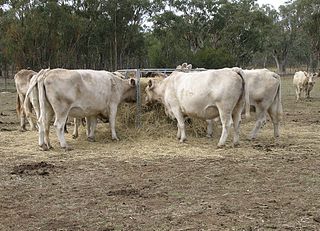
A stud animal is a registered animal retained for breeding. The terms for the male of a given animal species usually imply that the animal is intact—that is, not castrated—and therefore capable of siring offspring. A specialized vocabulary exists for de-sexed animals and those animals used in grading up to a purebred status.

The Bakharwal dog is found in northern India. It is an ancient working Indian dog breed found in Ladakh and across the Pir Panjal Range of India, where it has been bred for many centuries by the Bakarwal and Gujjar nomadic tribes, as a livestock guardian dog and settlement protector. While the Bakharwal Dog is mainly found in India, it is found in smaller numbers in Afghanistan and Pakistan.

A stud farm or stud in animal husbandry is an establishment for selective breeding of livestock. The word "stud" comes from the Old English stod meaning "herd of horses, place where horses are kept for breeding". Historically, documentation of the breedings that occur on a stud farm leads to the development of a stud book. Male animals made available for breeding to outside female animals are said to be "standing at stud", or at "stud service", referencing the relatively high probability that they are kept at a stud farm.
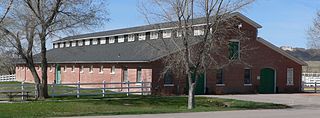
A part of the Quartermaster Corps, the U.S. Army Remount Service provided horses as remounts to U.S. Army units. Evolving from both the Remount Service of the Quartermaster Corps and a general horse-breeding program under the control of the Department of Agriculture, the Remount Service began systematically breeding horses for the United States Cavalry in 1918. It remained in operation until 1948, when all animal-breeding programs returned to Department of Agriculture control.
The Army Remount Service was the body responsible for the purchase and training of horses and mules as remounts for the British Army between 1887 and 1942.

The Bhimthadi or Deccani horse is an almost extinct breed of Indian horses. It was developed in Pune district in 17th and 18th centuries during the Maratha rule by crossing Arabian and Turkic breeds with local ponies.
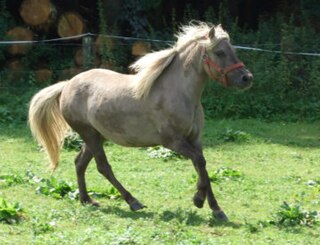
The German Classic Pony or German: Deutsches Classic-Pony is a modern German breed of riding pony. It derives from the traditional Shetland Pony of the Scottish Shetland Isles, but is principally influenced by the taller and more elegant American Shetland Pony.
